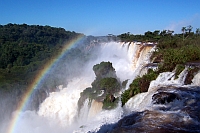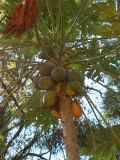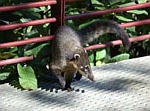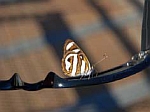Télédétection des sites du patrimoine naturel
Iguazu National Park (1/2)
The semicircular waterfall at the heart of this site is some 80 m high and 2,700 m in diameter and is situated on a basaltic line spanning the border between Argentina and Brazil. Made up of many cascades producing vast sprays of water, it is one of the most spectacular waterfalls in the world. The surrounding subtropical rainforest has over 2,000 species of vascular plants and is home to the typical wildlife of the region: tapirs, giant anteaters, howler monkeys, ocelots, jaguars and caimans.
Flora
The main characteristic of the flora in Iguazu is that there are multiple layers of it, one on top of another, from the forest floor to the canopy of the highest trees. Not only do the tops of the trees touch, but more plants hang from their branches, making it impossible to see the blue of the sky in some places. One of the more typical species in Iguazu is Palo Rosa (rose timber) which grows more than 40 meters high. This tree is threatened with extinction. Due to its declining numbers it has been proclaimed a National Monument.
There is also the palm tree, which grows in groups. The internal trunk of this plant is edible and very tasty, but its extraction causes the tree to die, which is putting the species in danger of extinction.
Satellites can observe where these trees are and if there number is increasing, decreasing or stable.
Other common plants are orchids, and the ceibo, a tree whose red blossoms are the national flower of Argentina.
Fauna
Many mammals live only in defined areas of the jungle: they are tree dwellers and live in communities. One of the more interesting adaptations of the tree dwellers is a tail that is capable of grasping, so it functions as a fifth hand. If you are lucky you will see monkeys moving through the trees with such grace that they appear to be dancing. Other animals that share this characteristic are the oso melero (collared anteater), weasels, the zarigüeyas (an oppossum) and the coendú, which is a rodent covered in spines.
The coaties, with their ringed tails are a common sight for visitors in the park who walk the trails. They always travel and rest in groups, delighting kids and playing with them.
The cats, agile, silent, and astute hunters, are another wonder of the park. The most important is the jaguar which was declared a National Natural Monument in 2001. They hunt a wide variety of prey, including large mammals. Other cats to watch out for are the smaller but equally deadly puma, the ocelote and the leopard.
The butterflies are enormous, with brilliant colours and strange forms.
There are more than 400 species of birds, including many types of parrots and toucans. But the most common is called Vencejos de Cascada (Great Dusky Swift) which builds its nests in the rocks behind the falls.
When viewing the fish, keep in mind that the waterfalls have constructed a natural barrier between the upper and lower rivers, allowing the fish to evolve separately.





